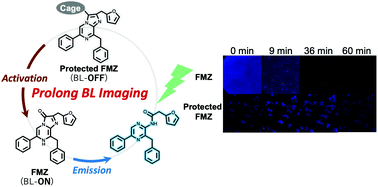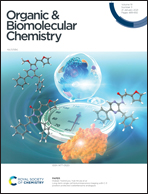Long-term single cell bioluminescence imaging with C-3 position protected coelenterazine analogues†
Abstract
Bioluminescence is a powerful imaging modality for monitoring biological phenomena both in vitro and in vivo. Bioluminescence imagin (BLI) is becoming a seamless imaging technology covering the range from cells to organs of small animals. Long-term imaging at the single cell level would lead to a true understanding of the dynamics of life phenomena. This work presents a long-term single cell bioluminescence imaging technology accomplished with C-3 position protected furimazines (FMZs), a CTZ analogues, which generate intense blue emission when paired with a highly stable engineered luciferase, Nanoluc. Four types of FMZs protected at the C-3 position have been synthesized. The type and steric bulkiness of the protection group strongly contributed to storage stability and the kinetics of the bioluminescence reactions of the analogues in human living cells. In particular, two developed FMZ analogues resulted in significantly longer bioluminescence emission with higher S/N ratio than FMZ at single cell level. Long-term bioluminescence single cell imaging technology with the developed FMZ analogues will lead to seamless imaging in the range from cells to organs of small animals.

- This article is part of the themed collection: Chemical Biology in OBC


 Please wait while we load your content...
Please wait while we load your content...